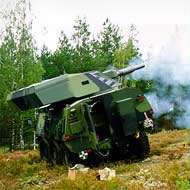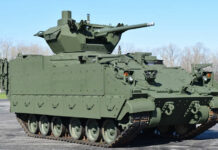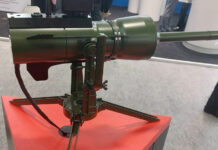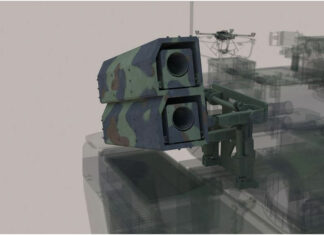Mobile mortars and their applicationin the modern battle
The enthusiasm in Russian mortars was not matched by the west. Post war Western nations seemed to place limited interest in developing mobile mortar system, placing their priorities on heavier self propelled rocket artillery designs, with nuclear capability. Smaller armies, faced with restricted arms procurement resources such asIsrael’s Army, that had to cope with lack of organic artillery, equippedhalftracks, tank chassis or light armoured vehicles mounting forward firing 81, 120 and 160mm mortars.
AMS II 120mm mortar installed on 8×8 LAV chasis, used by the Royal Saudi Arabian Army.

A new trend appeared, however, after Vietnam, as well as the development of low-intensity warfare engagements that followed the Vietnam War, when the lack of organic tactical fire support once again became a major problem to front line troops. One of the main drawbacks, was that man-packed infantry mortars carried insufficient ammunition to provide effective fire support at the tactical combat level and the tactical commander depended mainly on higher unit artillery barrages, which often misfired, due to erratic communications, endangering friendly fire incidents. With ground forces becoming ever more mobile, and AFVs rendering better survivability on a fire saturated battlefield, in-house organic fire support became a vital combat element even at relatively junior tactical levels. This situation became even more critical in Military Operations in Urban Terrain (MOUT) operations, which will become major contingencies in future combat situations. Under such conditions, lack of organic commander’s “hip-pocket” fire support would become devastating for the in-fighting troops.
With dramatic developments in enhanced firepower lethality, under-armor self propelled artillery became a life saving imperative, and battlefield survival of the veteran infantry mortar equally depended on an urgent technological solution. It was in the mid-seventies and early eighties of the last decade, that some of the more interesting developments in mobile mortar design matured into highly effective weapon systems.
Additional Parts of this article :




















